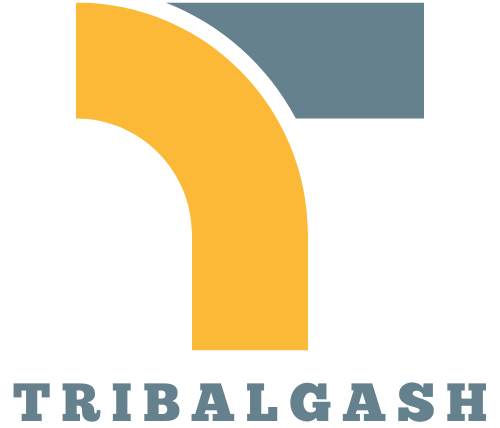Navigating the maze of career growth can feel like trying to find a unicorn in a haystack. With countless paths to choose from, it’s easy to get lost or overwhelmed. That’s where a career development plan template swoops in like a superhero ready to save the day. It’s not just a fancy piece of paper; it’s a roadmap to success that helps individuals plot their journey and avoid those pesky dead ends.
Table of Contents
ToggleUnderstanding Career Development Plan Templates
Career development plan templates provide individuals with a structured approach to managing their professional growth. These templates simplify the process of setting goals, tracking progress, and achieving aspirations.
Importance of Career Development Plans
Career development plans guide individuals in identifying and pursuing their professional objectives. Clear direction promotes confidence and motivation while reducing uncertainty in career choices. Research indicates that employees with structured career development are more engaged and productive. By aligning personal goals with organizational needs, a well-constructed plan fosters mutual growth. This alignment benefits both the employee and the organization, enhancing job satisfaction and retention.
Key Components of a Career Development Plan Template
Effective templates typically include specific elements to maximize their effectiveness. Goals should be measurable and time-bound, allowing for progress tracking. Action plans outline the steps to achieve these goals and establish accountability. Moreover, self-assessments help identify strengths and areas for improvement, guiding skill development. Feedback mechanisms ensure continuous improvement, allowing individuals to adjust plans in response to changing circumstances. Regular reviews of progress maintain focus and encourage proactive adjustments to the development plan.
How to Create a Career Development Plan Template
Creating a career development plan template involves several structured steps. Following a specific guide maximizes the template’s effectiveness in achieving professional goals.
Step-by-Step Guide
- Define career objectives clearly. Objectives should be specific, measurable, achievable, relevant, and time-bound.
- Conduct a self-assessment. Evaluate skills, strengths, and areas for growth to ensure alignment with career goals.
- Identify essential skills or knowledge gaps. Determine what skills are necessary for desired positions and highlight areas to improve.
- Develop an actionable plan. Create detailed steps for acquiring skills and achieving objectives, including selecting relevant training or mentoring opportunities.
- Integrate progress tracking. Use a method for monitoring advancements towards goals regularly, adjusting the plan as necessary.
Tips for Personalizing Your Template
Customize the template with personal interests and career aspirations. Consider needs and preferences to make the plan more engaging.
Include specific milestones to provide motivation throughout the journey. Setting timeframes for each milestone ensures accountability.
Incorporate feedback from mentors and peers. Their insights can enhance personal development and guide important decisions.
Apply visual elements. Using charts or graphs can enhance engagement and clarify progress in a visually appealing way.
Review and adjust the plan periodically. Regular assessments allow for necessary adjustments in response to shifting goals or circumstances.
Benefits of Using a Career Development Plan Template
Utilizing a career development plan template offers numerous advantages that guide individuals toward fulfilling their professional aspirations.
Enhancing Clarity and Focus
A career development plan template promotes clarity by outlining specific goals. Individuals can visualize their career path, making decision-making easier. Providing a structured framework sets priorities, ensuring focus remains on essential milestones. The template streamlines the process of identifying skill gaps, allowing for targeted improvements. Employees can track progress against set objectives, leading to increased accountability. As clarity increases, motivation often follows, driving individuals to pursue their goals with confidence.
Fostering Professional Growth
Career development plan templates encourage ongoing professional growth through actionable steps. Individuals establish measurable targets, transforming aspirations into achievable outcomes. Regular self-assessments help identify strengths and areas for improvement, fostering a culture of continuous learning. Peer and mentor feedback contribute valuable insights, enhancing skill development. Systematic reviews of progress allow individuals to adjust their plans as necessary, adapting to new opportunities. This proactive approach not only boosts engagement but also increases overall job satisfaction.
Common Mistakes to Avoid
When crafting a career development plan, avoiding common pitfalls can be crucial for success. Identifying and addressing these mistakes ensures a more effective path toward professional growth.
Lack of Specificity
Defining clear, specific goals matters greatly in a career development plan. Ambiguous objectives lead to confusion and hinder progress. It’s essential to outline measurable targets, like gaining a certification or completing a specific project. Vague language makes tracking accomplishments difficult, while precise terms foster clarity and focus. Goals should emphasize timelines and expected outcomes, making aspirations more attainable. Including specific skills or knowledge areas reinforces accountability, guiding individuals toward concrete achievements. Consider adding numerical benchmarks, such as aiming for a promotion within 18 months. Clear objectives allow for better decision-making and tracking progress effectively, ultimately enhancing motivation.
Ignoring Career Goals
Ignoring long-term career objectives often derails growth efforts. Individuals may become overwhelmed by short-term tasks and lose sight of their primary aspirations. Aligning daily activities with overarching goals is vital for sustained motivation and direction. Individuals should regularly reassess their goals, ensuring they reflect current interests and market demands. Lack of a defined vision creates uncertainty, which can diminish engagement. Recognizing key milestones within one’s career journey helps maintain focus on what truly matters. Failing to prioritize these goals may lead to stagnation and dissatisfaction. A structured approach to incorporating career aspirations within the development plan directly correlates to enhanced professional fulfillment and achievement.
A career development plan template is essential for anyone looking to navigate their professional journey with confidence. By providing a clear structure for goal setting and progress tracking it transforms aspirations into actionable steps. Individuals can enhance their engagement and job satisfaction by regularly reviewing and adjusting their plans to align with evolving interests and market trends.
Embracing this tool not only fosters accountability but also encourages continuous learning and skill development. With a well-crafted template in hand professionals can confidently pursue their objectives while avoiding common pitfalls. Ultimately a strategic approach to career development empowers individuals to take charge of their growth and achieve lasting success.









